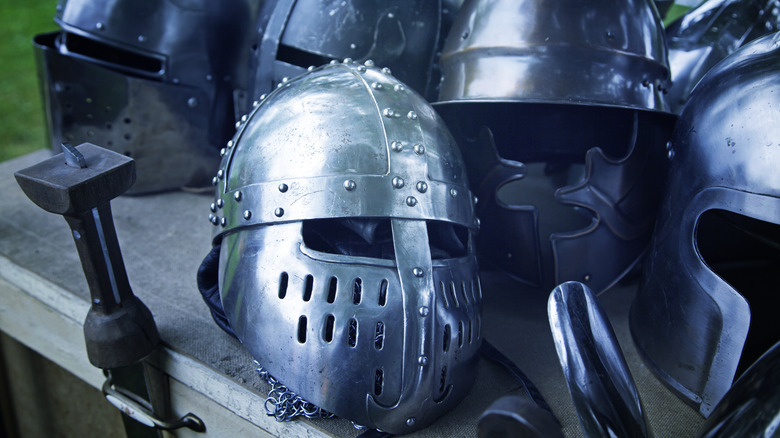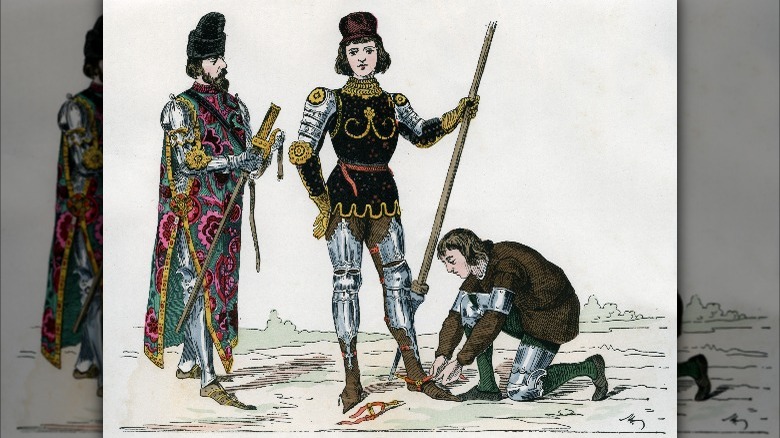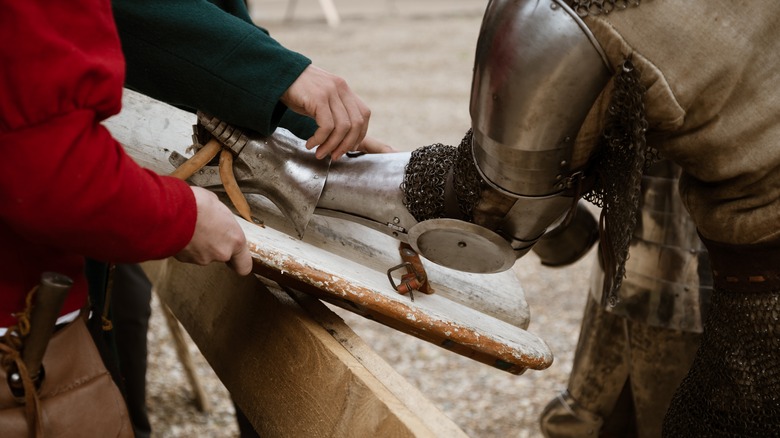The Dangerous Job Of An Arming Squire
Becoming a medieval knight wasn't as easy as applying for the job, and it wasn't open to everyone either. Only boys from noble families were allowed to train to be a knight, and it took years of rigorous training before one was deemed ready to fight in battles. Boys started training as young as 7 years old as pageboys, and those who have performed their duties satisfactorily were promoted to the position of a squire at about 14 years of age.
The term "squire" came from the Old French word "esquier," which literally translates to "shield carrier." At this stage, a squire was trained under the guidance of a knight. According to History of Yesterday, a knight had several squires under his tutelage, and they were responsible for several tasks, including cleaning and maintaining weapons and armors. Furthermore, they were also required to study reading, writing, and other disciplines, as well as studying the Code of Chivalry.
The responsibilities of a squire
Squires, as knights-in-training, were expected to learn horsemanship, weapon use, and must have the strength and endurance required to be fit for battle. However, they were also required to learn social skills and were trained in music, dancing, and courtly etiquette (via Lords and Ladies). Squires were given different job titles as well, and while a squire of the table is responsible for tasks in the castle, an arming squire assisted a knight on the battlefield.
As part of their training, arming squires served knights by helping them dress in their armor, running errands for them, and even guarding them as they slept through the night, as reported by Medieval Life and Times. After a battle, arming squires were the ones who cleaned the dirt and blood from the knights' armors using vinegar, sand, and urine. These tasks were deemed essential in the training process of squires, as they allowed them to witness the day-to-day life of a knight while also improving their skills in battle.
The dangers of being an arming squire
Apart from those previously mentioned, it was also the job of an arming squire to accompany a knight into battle. This allowed them to experience firsthand what to expect when they become knights themselves. Entering a battle was always dangerous for a knight, even more so for an arming squire who sometimes went to the battlefield unprotected (via BuzzFeed).
An arming knight is responsible for holding the knight's shield and weapon, and they were also expected to defend them from danger. They replaced broken weapons during a fight and were often put in the middle of the action, per Lords and Ladies. For this reason, many squires got injured or even died on the battlefield not even reaching knighthood. However, there have also been rare instances wherein a squire was knighted in the middle of a battlefield for doing an extraordinary job that was deemed worthy of being a knight. If an arming squire passed this stage of their knighthood training and overcame the dangers, they were knighted in a ceremony when they were between the ages of 18 and 21 years old.


